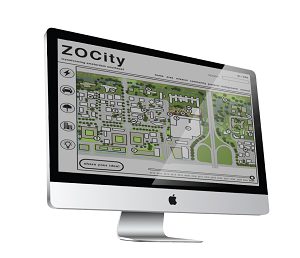 How can digital technology help local communities to sustainably take co-ownership over the transformation of their own urban neighbourhood, unlocking their collective creativity and stimulating them to strategically combine resources to get real projects done? And can this co-creative, locally embedded and experience-based form of urbanism generate a more diverse, experimental and inspiring palette of ideas and solutions for our cities?
How can digital technology help local communities to sustainably take co-ownership over the transformation of their own urban neighbourhood, unlocking their collective creativity and stimulating them to strategically combine resources to get real projects done? And can this co-creative, locally embedded and experience-based form of urbanism generate a more diverse, experimental and inspiring palette of ideas and solutions for our cities?
Five years ago we unsolicitedly adopted Amstel3 office district in Amsterdam. Due to the crisis the municipality could not continue her big regeneration plans for the area, that faces a 27% vacancy rate, and had to withdraw from her proactive planner’s role. However the local market and citizens were not organized or equipped to instantly take over the responsibility for their neighbourhood. The stakeholder web was heterogeneous and the real estate ownership fragmented. Stakeholders had no overview of what was going on and no platform to exchange ideas and take collective decisions. Besides most stakeholders were laymen in the field of urban design and development and did not automatically feel appealed or entitled to engage in it. When we started we had no money, land, real estate or any connections with people who did. Nor did we have a client. What we did have were dreams about what the district could become and the -admittedly somewhat megalomaniacal- conviction that we could p ersonally save it with our creative super powers.
By resisting the idea of immediately making a new master plan of which the local community had to be convinced, a void emerged in which an open dialogue could take place about the ideas, piorities, ambitions and nuisances that live within the local community. This dialogue was kickstarted by a light-hearted local campaign (the Glamourmanifest) and catalysed by a simple conversation tool in the form of a board game that we played with various groups of stakeholders and potential new target groups for the area. The idea is that the participants have to collectively get to a thousand points, which equals an attractive and lively neighbourhood that they have to create by putting buildings, amenities, green spaces and special events on the map. Participants win or loose as a group, so it becomes more interesting to strategically build upon each other’s initiatives, share facilities or combine resources to realise collective interventions that all individuals profit from.
It took time to get the area’s future on the different stakeholders’ agendas as a relevant, accessible and even fun subject to dream about and to engage in. As the imagination and enthusiasm were triggered in a growing number of people and organizations, a network and support base grew around the transformation mission of Amstel3. At the same time the documentation of all our conversations and gaming rounds grew into a substantial local database with many interesting ideas and solutions that went beyond our own imagination.
Now imagine if we take that game to the real world, allowing the whole local community around the table continuously by using digital technology. Exchanging real information and inspirational references about relevant themes, like mobility, energy, building transformation and public space. Introducing spatial projects and events on an interactive online map and discussing them with neighbours, specialists, potential providers or clients and the municipality. Building project-based alliances and cleverly combining resources via a range of financial tools like crowdfunding.
Then urban transformation becomes an ongoing evolutionary process that is about informing, inspiring, dreaming, creating, discussing, collaborating, testing, deciding, sharing, investing, executing and evaluating. The urban planner becomes a curator, cleverly synthesizing local information and connecting existing initiatives to this information and to each other. And last but not least the local community becomes really smart, unlocking creative super powers that we can only dream of.
Contact person: Saskia Beer
Organisation: TransformCity / Glamourmanifest
Funding: Public and private (local multi-stakeholder contributions + subsidy)
